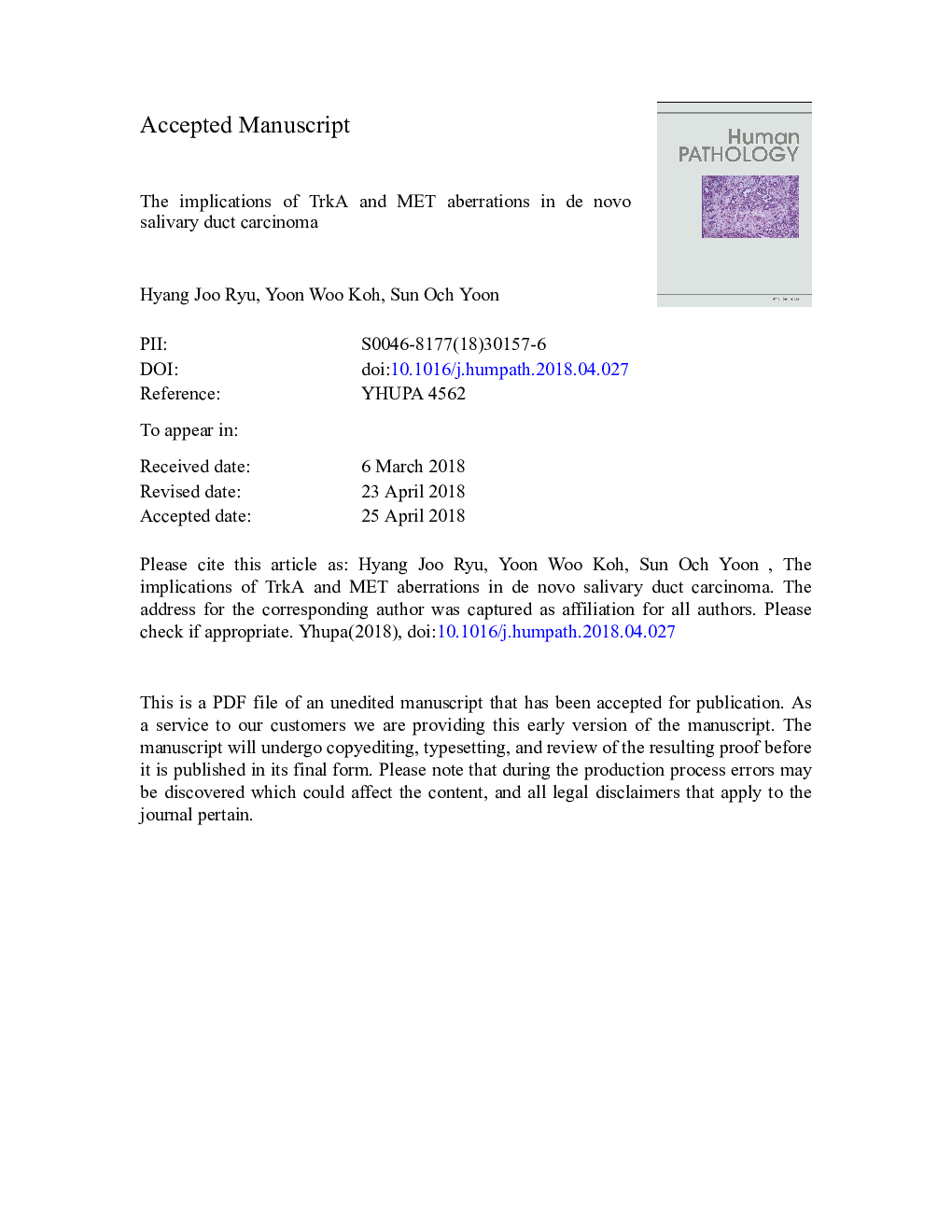| Article ID | Journal | Published Year | Pages | File Type |
|---|---|---|---|---|
| 10144014 | Human Pathology | 2018 | 30 Pages |
Abstract
Salivary duct carcinoma (SDC) is an aggressive carcinoma with poor prognosis. Although anti-HER2 therapy is a potential treatment option for HER2-positive SDC, other potential therapeutic targets are not known, in particular for HER2-negative cases. In this study, the recently identified receptors tyrosine kinases MET and tropomyosin-receptor kinase (Trk) were investigated as potential therapeutic targets. A total of 28 consecutive, surgically resected, de novo SDC cases were selected after evaluating histology and immunohistochemical expression of androgen receptor. Immunohistochemical expression of c-erb2, TrkA, TrkB, TrkC, and c-MET was analyzed, and the genetic status of the HER2 and MET genes was investigated through dual-color silver in situ hybridization. High expression of c-MET or Trk was defined as that above the median value. Among the 28 SDC cases, 64.3% (18/28) were HER2-positive. c-MET expression varied, with a median H-score of 65 (range, 0 to 200). Copy number gain and amplification of MET were noted in 57.1% (16/28) and 10.7% (3/28) of cases, respectively. TrkA was variably expressed, with a median H-score of 100 (range, 0 to250). High TrkA expression was significantly related to an inferior overall survival rate in HER2-negative SDC. High expression of TrkA and c-MET and MET copy number gain/amplification were frequent events in SDC, and high expression of TrkA revealed the tendency to be related to poor prognosis in HER2-negative SDC. TrkA and MET may be possible therapeutic targets in SDC, especially in HER2-negative SDC.
Related Topics
Health Sciences
Medicine and Dentistry
Pathology and Medical Technology
Authors
Hyang Joo MD, Yoon Woo MD, PhD, Sun Och MD, PhD,
